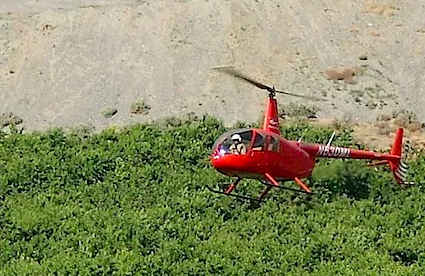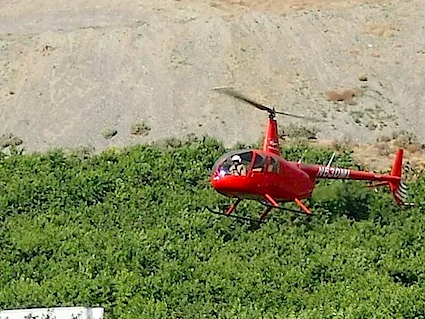Cherries, Helicopters, and Hair Dryers


We probably think of cherries as berries, but they’re not — they’re drupes, or stone fruits, and are more commonly related to peaches, plums, and even avocados. Next time you’re in the produce section of your local supermarket, pay attention to the prices. While they can fluctuate wildly due to seasonal changes and supply chain hiccups, in general, you’ll note that cherries are typically more expensive than the other fruits and berries they’re often mistaken for.
The reason why? It turns out that cherries are pretty hard to grow. You need cherries trees, irrigation systems, good soil, harvesters, etc. — and if it rains too much, you may need a helicopter fleet.
Cherries have a very thin membrane (or skin) that separates the sweet, juicy fruit inside from the world around it. But that skin isn’t as sturdy as that of a peach or plum (and definitely not as resilient as the avocado’s). If that skin cracks or splits, the juices escape, robbing the would-be eater of the sugars which make the cherry taste good. Cherry orchards need to take measures to ensure that the skins of their cherries remain intact.
But being super careful when picking cherries isn’t quite enough to ensure that they don’t rupture. The growing process has to be carefully managed, too. While all plants need water, for cherries, too much of it can make them literally burst at the seam. Growers need to monitor their orchard’s water intake.
Unfortunately, that’s easier said than done, because of a natural phenomenon you’re almost certainly familiar with: rain. Every so often, water falls from the skies, and at varying speeds and volumes. Cherries grow outdoors, so having an unpredictable amount of water fall on them at unplanned intervals isn’t a good thing for those trying to grow them — too much rain destroys the crop, as seen above (via ABC News Australia). We can’t change the weather, though; we can only adapt to its whims. So when the rains come, out come the industrial-sized hair dryers — helicopters.

As Maria Langer, a cherry-drying helicopter pilot explains, the theory is simple: “the downwash from our rotor blades shakes the branches, thus shaking off accumulated water.” Simple, but not easy; you need to fly low enough to shake the branches but not so low as to hit them. And, as she noted in another post, “cherry drying is dangerous. All operations are inside the deadman’s curve. If you have an engine problem, you will crash.” But if you’re experienced and safe, the tactic of using helicopters to preserve wet cherry crops really does work.
If you want to learn more about the Langer’s life of a cherry-drying helicopter pilot, here’s a very detailed blog post by her; she walks you through every step. And here’s a video she made, running just under 25 minutes, narrating a flight.
Bonus fact: Apple Computer’s famous logo is an apple with a bite out of it. The bite is there so that the logo can be shrunk down and still clearly be an apple; according to CNN, it ensures “that a small Apple logo still looks like an apple and not a cherry.”
From the Archives: Red Honey: The mystery where cherries were half the answer.
